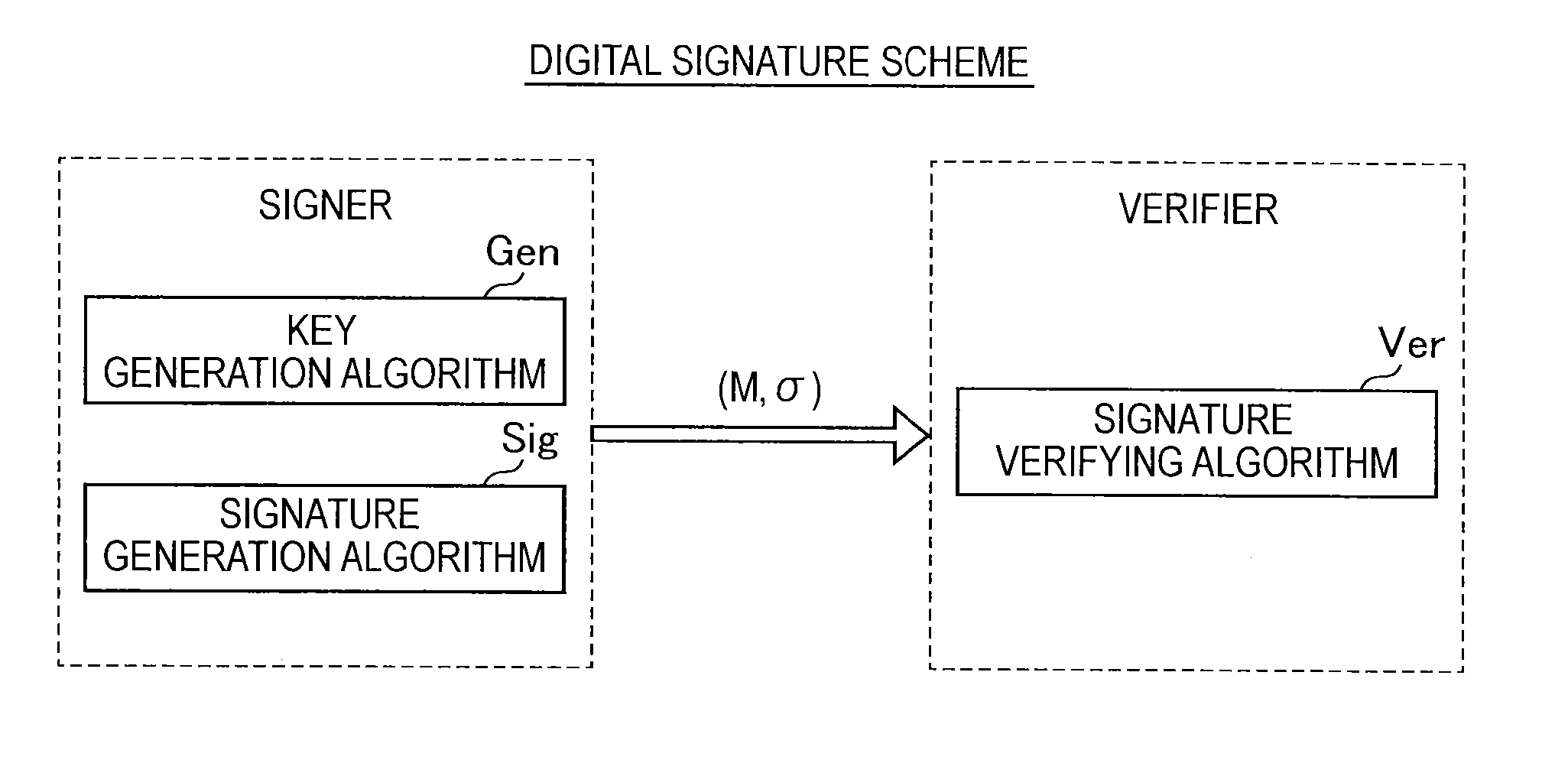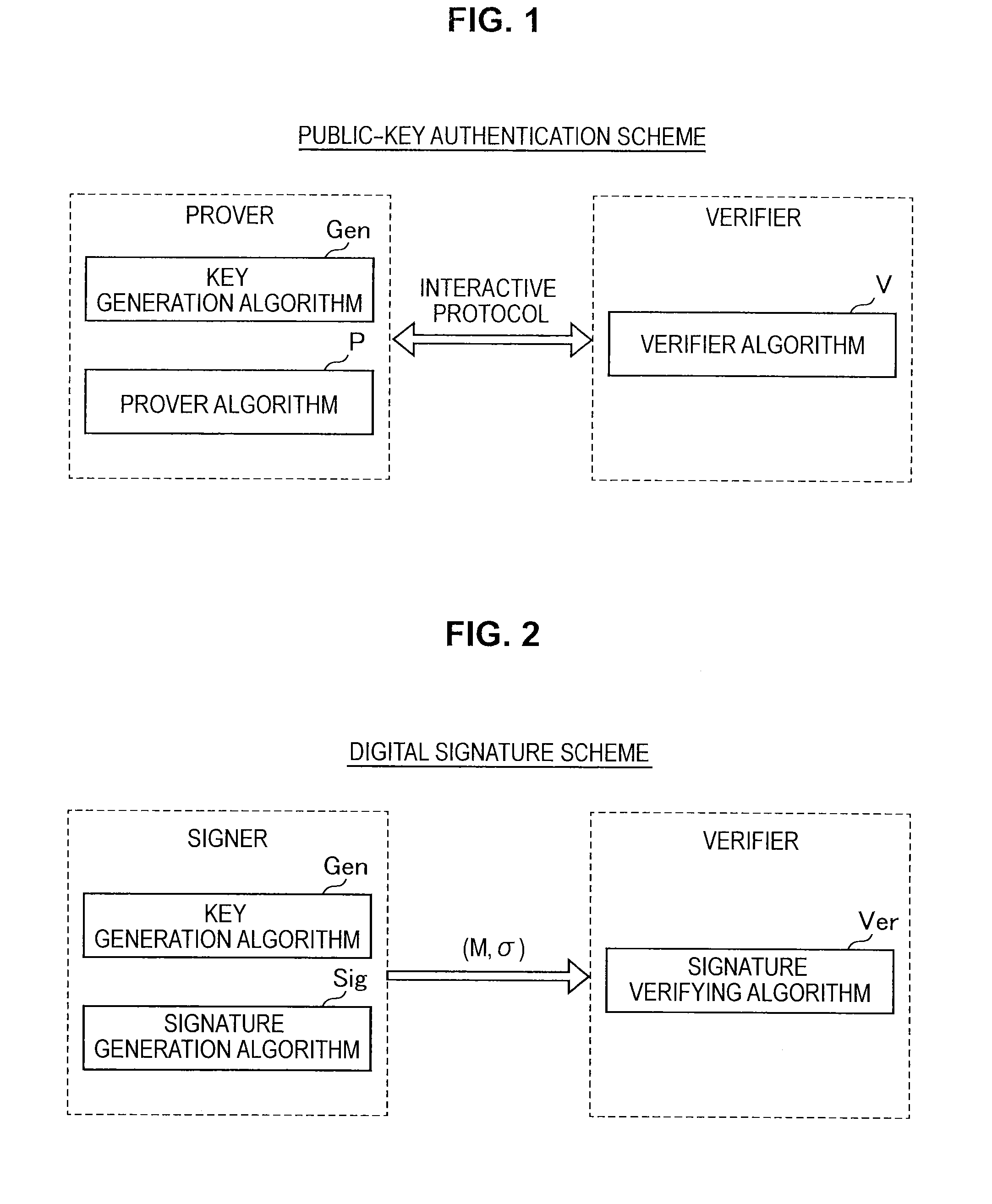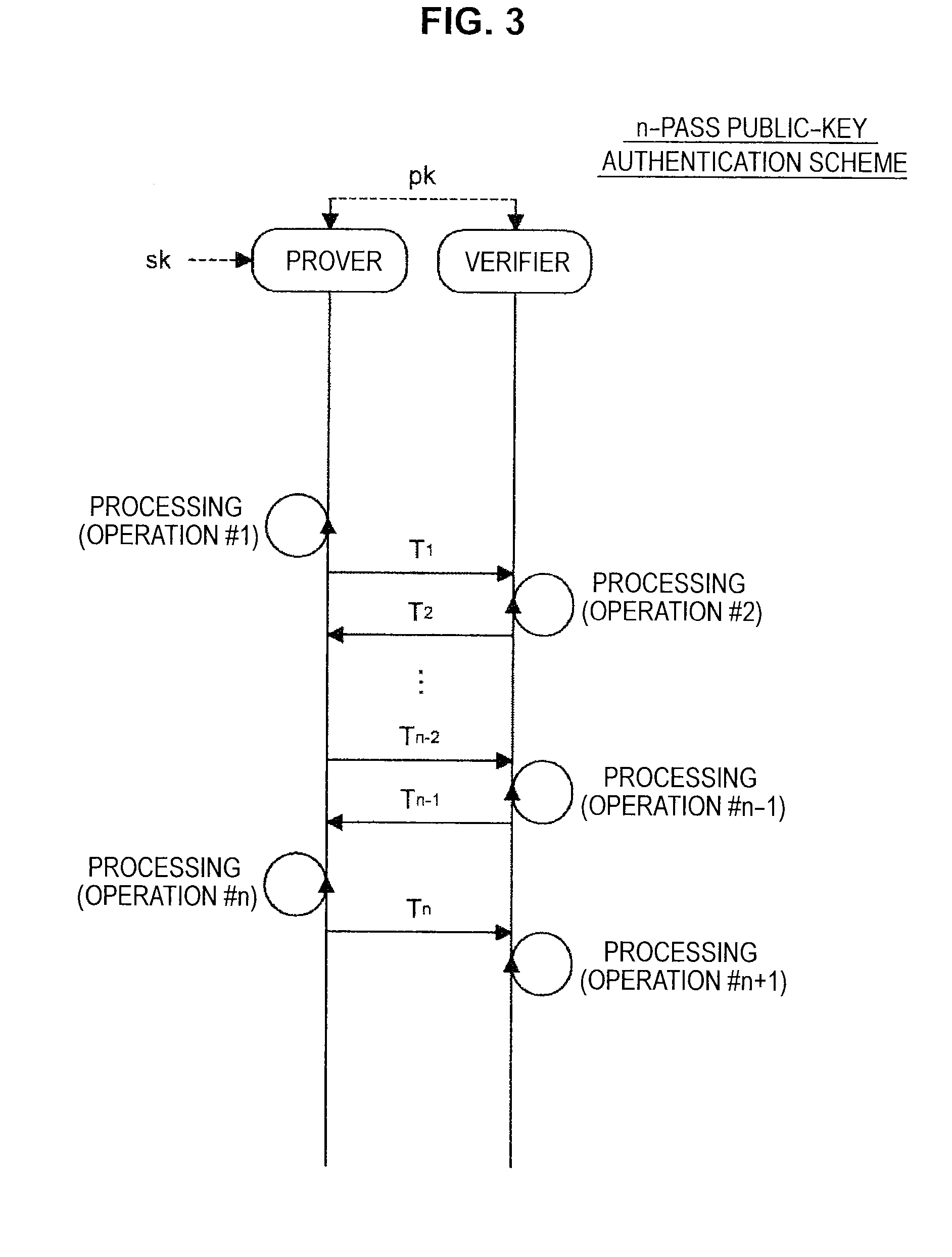Information processing apparatus, information processing method, program, and recording medium
a technology of information processing and information processing method, which is applied in the field of information processing apparatus, information processing method, program and recording medium, and can solve the problems of a definite chance of false verification and a definite chance of the divulgence of secret key information, and it is not possible to physically sign or affix a seal to digitized data
- Summary
- Abstract
- Description
- Claims
- Application Information
AI Technical Summary
Benefits of technology
Problems solved by technology
Method used
Image
Examples
first embodiment
2: FIRST EMBODIMENT
[0142]Hereinafter, description will be given on the first embodiment of the present technology. The embodiments herein relate to a public-key authentication scheme and a digital signature scheme that base their safety on the difficulty of solving multi-order multivariate simultaneous equations. However, the embodiments herein differ from techniques of the related art such as HFE digital signature schemes, and relate to a public-key authentication scheme and a digital signature scheme that utilize multi-order multivariate simultaneous equations that lack a means of efficient solving (trapdoors).
2-1: Algorithm of Public-Key Authentication Scheme
[0143]First of all, an algorithm of a public-key authentication scheme (hereinafter, a “present technique”) according to the present embodiment will be described with reference to FIG. 4. FIG. 4 is an explanatory diagram for describing an algorithm according to the present technique. The present technique is configured with a...
second embodiment
3: SECOND EMBODIMENT
[0390]Next, a second embodiment of the present technology will be described. The 3-pass public-key authentication scheme has been described until now. In the present embodiment, a 5-pass public-key authentication scheme (hereinafter referred to as a “present technique”) will be described. The present technique is a scheme of securing soundness of the public-key authentication scheme by setting 2q verification patterns of the verifier.
[0391]In the 3-pass public-key authentication scheme according to the first embodiment, the probability of the false verification per one interactive protocol is 2 / 3, but in the present technique, the probability of the false verification per one interactive protocol is 1 / 2+1 / q as will be described later. Here, q is an order of a ring to be used. Thus, when the order of the ring is sufficiently large, as illustrated in FIG. 39, according to the present technique, the probability of the false verification each time can be reduced, and...
modified example
[0477]Further, the structure of the interactive protocol may be modified such that the hash value H (c1,1, c1,2, . . . , cN,1, cN,2) may be sent instead of sending (c1,1, c1,2, . . . , cN,1, cN,2) to the verifier algorithm V after operation #1. In the case of this modification, a single hash value is sent at the first pass as a message, and thus it is possible to significantly reduce communication traffic. However, since there is a message that is hardly restored by the verifier algorithm V even using information sent from the prover algorithm P, it is necessary to send the corresponding message together when the response is sent. Through this structure, in the case of the n-time parallel repetition structure, it is possible to reduce the number of pieces of information to be sent by N−1.
[0478](Parallelized Algorithm Related to Extension Scheme)
[0479]Here, a structure of the parallelized algorithm related to the extension scheme will be described with reference to FIG. 19. The struc...
PUM
 Login to View More
Login to View More Abstract
Description
Claims
Application Information
 Login to View More
Login to View More - R&D
- Intellectual Property
- Life Sciences
- Materials
- Tech Scout
- Unparalleled Data Quality
- Higher Quality Content
- 60% Fewer Hallucinations
Browse by: Latest US Patents, China's latest patents, Technical Efficacy Thesaurus, Application Domain, Technology Topic, Popular Technical Reports.
© 2025 PatSnap. All rights reserved.Legal|Privacy policy|Modern Slavery Act Transparency Statement|Sitemap|About US| Contact US: help@patsnap.com



